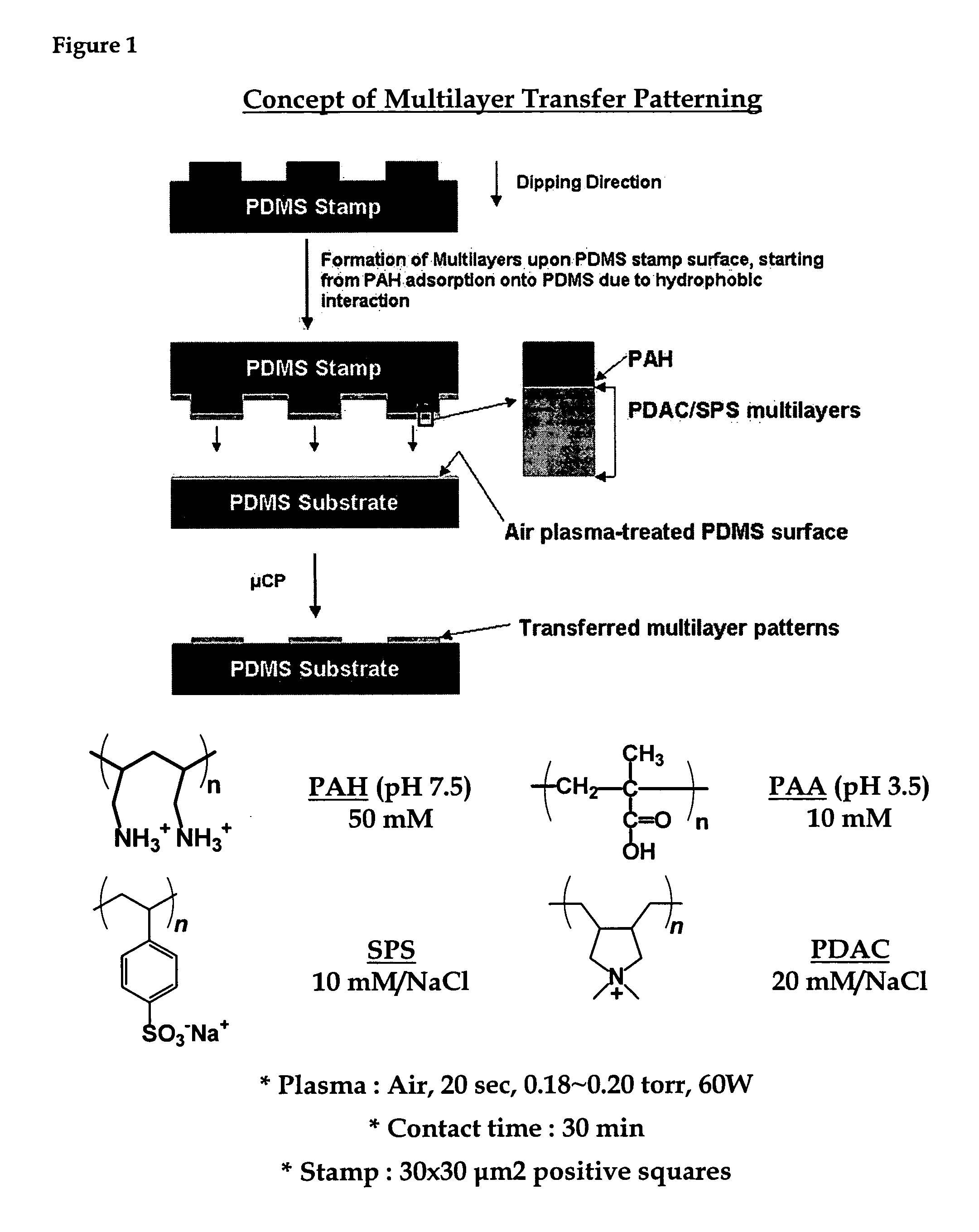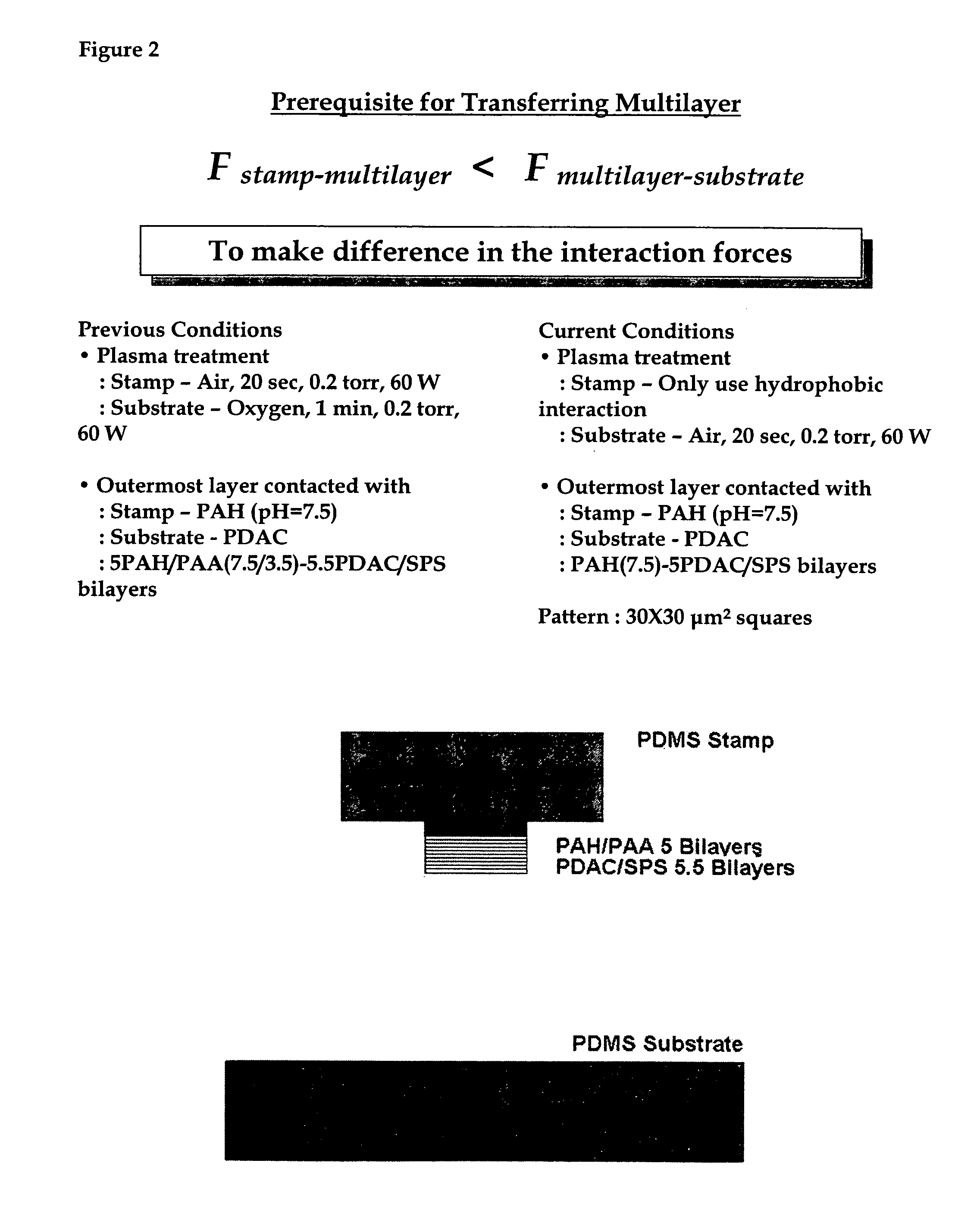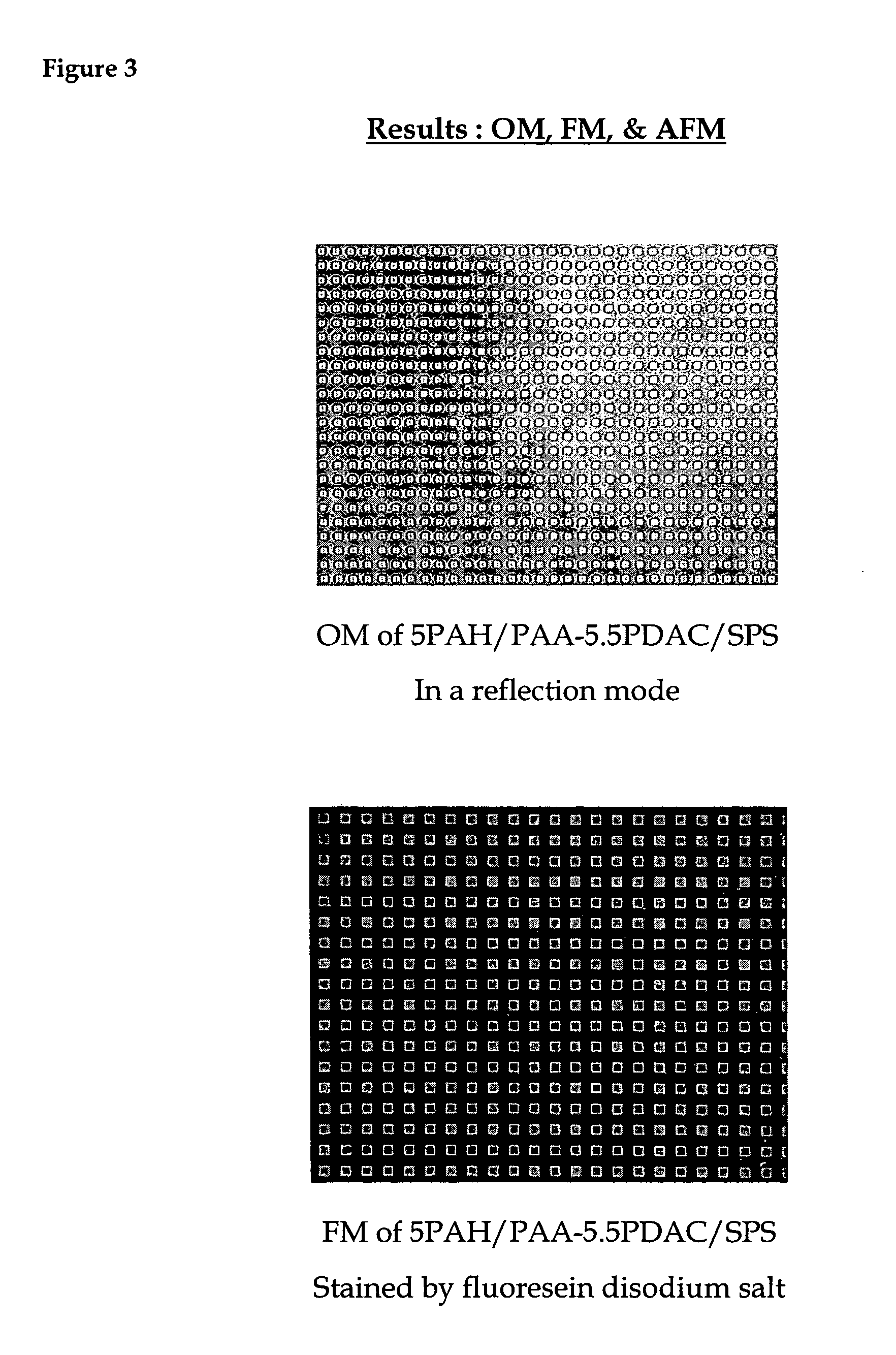Multilayer transfer patterning using polymer-on-polymer stamping
a technology of polymer-on-polymer and transfer patterning, which is applied in the field of multi-layer transfer patterning using polymer-on-polymer stamping, can solve the problems of increasing manufacturing costs, limiting the application range of light-based lithography to curved, non-planar surfaces,
- Summary
- Abstract
- Description
- Claims
- Application Information
AI Technical Summary
Benefits of technology
Problems solved by technology
Method used
Image
Examples
example 1
Stamping Copolymers on a Surface to Serve as Templates for Additional Layers
Materials
[0120]Poly(acrylic acid) sodium salt (MW=20,000) (PAA), sodium poly(styrene sulfonate) (MW=35,000) (SPS), and linear polyethyleneimine (MW=25,000) (LPEI) were obtained from Polysciences. Polydiallydimethyl ammonium chloride (MW=100,000–200,000) (PDAC) and branched polyethyleneimine (MW=25,000) (BPEI) were obtained from Aldrich. All polyelectrolytes were used as received without further purification. Polyelectrolyte dipping solutions were prepared with 18 MΩ Millipore water, and the pH of these solutions was adjusted with either HCl or NaOH. The concentrations of all polyelectrolytes were 0.01 M as based on the molecular repeat unit of the polymer, with the exception of the PDAC solution, which was 0.02M. Solutions were filtered with a 0.45 μm Acrodisc syringe filter (Pall Corporation) to remove any particulates. The copolymer of an oliogethylene oxide functionalized vinyl ether and maleic anhydride ...
example 2
Stamping Block Copolymer, Graft Copolymer and Polyelectrolytes—Stamping of PS-b-PAA Block Copolymer
Materials
[0125]Poly(diallyldimethylammonium chloride) (PDAC) of MW=150,000 was purchased from Aldrich. Sulfonated polystyrene (SPS) of MW=70,000 was obtained from Aldrich. Poly(allylamine hydrochloride) (PAH) of MW=50,000–65,000 and poly(acrylic acid) (PAA) with MW=90,000 were purchased from Aldrich; polystyrene-polyacrylic acid diblock copolymer (PS-b-PAA) with a PS block MW=66,500 and PAA block MW=4,500 was obtained from Polysource. The aminopropyltrimethoxy silane was also obtained from Aldrich. The stamp used to make prints on the multilayers was a PDMS stamp. It was made by pouring a commercial PDMS mix (Sylguard, 184 silicone elastomer kit) over a silicon master etched with the desired pattern.
Substrate Preparation
[0126]Three different substrates were used as platforms for the stamping of the PS-b-PAA block copolymer. Direct stamping onto polyelectrolyte multilayer substrates was...
example 3
Stamping of Polyelectrolytes on Charged Multilayer Surfaces
Substrate Preparation
[0129]The strong polyelectrolytes SPS and PDAC were used to form multilayer platforms on which solutions of the same polymers could be stamped. The platforms were built on glass slides cleaned with a dilute Lysol / water mixture in a sonicator. To start the first bilayer, the slides were then immersed for twenty minutes in the PDAC solution (0.02M PDAC, of MW 100,000–200,000, in Milli-Q water, with 0.1M NaCl, filtered to 0.22 microns). Following a two-minute rinse, the slides were placed into the SPS solution (0.01M SPS, of MW 70,000, in Milli-Q water, with 0.1M NaCl, filtered to 0.22 microns) and allowed to sit for 20 minutes. They were rinsed a second time, and sonicated for three minutes prior to repeating the procedure to make the next bilayer. Clark, S. L.; Montague, M. F.; Hammond, P. T. Macromol. 1997, 30, 7237–7244.
Microcontact Printing of Polyions
[0130]The PDMS stamp surfaces had to be made polar ...
PUM
| Property | Measurement | Unit |
|---|---|---|
| diameter | aaaaa | aaaaa |
| diameter | aaaaa | aaaaa |
| diameter | aaaaa | aaaaa |
Abstract
Description
Claims
Application Information
 Login to View More
Login to View More - R&D
- Intellectual Property
- Life Sciences
- Materials
- Tech Scout
- Unparalleled Data Quality
- Higher Quality Content
- 60% Fewer Hallucinations
Browse by: Latest US Patents, China's latest patents, Technical Efficacy Thesaurus, Application Domain, Technology Topic, Popular Technical Reports.
© 2025 PatSnap. All rights reserved.Legal|Privacy policy|Modern Slavery Act Transparency Statement|Sitemap|About US| Contact US: help@patsnap.com



